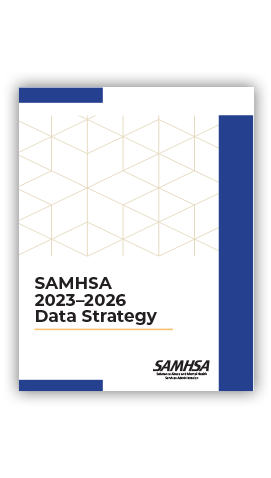SAMHSA's 2023-2026 Data Strategy
SAMHSA’s data strategy details the agency’s commitment to data and evidence, which is possible through robust systems of data collection, analysis, and dissemination.
In fall 2022, SAMHSA held over 20 listening sessions with stakeholders from a variety of interest groups, including grantees; federal partners; organizations representing diverse racial, ethnic, cultural, and sexual minority communities; substance use and mental health professional councils and associations; youth-serving organizations; entities representing persons with lived experience; state and provider associations; researchers; and tribal partners, as well as internal stakeholders.
This data strategy is predicated upon our learnings from these sessions and is outlined across four key goals:
- Enhance SAMHSA’s ability to collect, capture and maintain high-quality data.
- Conduct robust performance monitoring, evaluation, and surveillance.
- Strengthen access to, utilization of, and dissemination of SAMHSA data
- Expand and strengthen SAMHSA’s workforce capacity.
In the more than 15 years since SAMHSA published its last such strategy, systems of and approaches to data collection and performance monitoring have evolved. Fulfillment of this data strategy will bring SAMHSA closer to achieving our vision that people with, affected by, or at risk for mental health and substance use conditions receive care, thrive, and achieve well-being.


